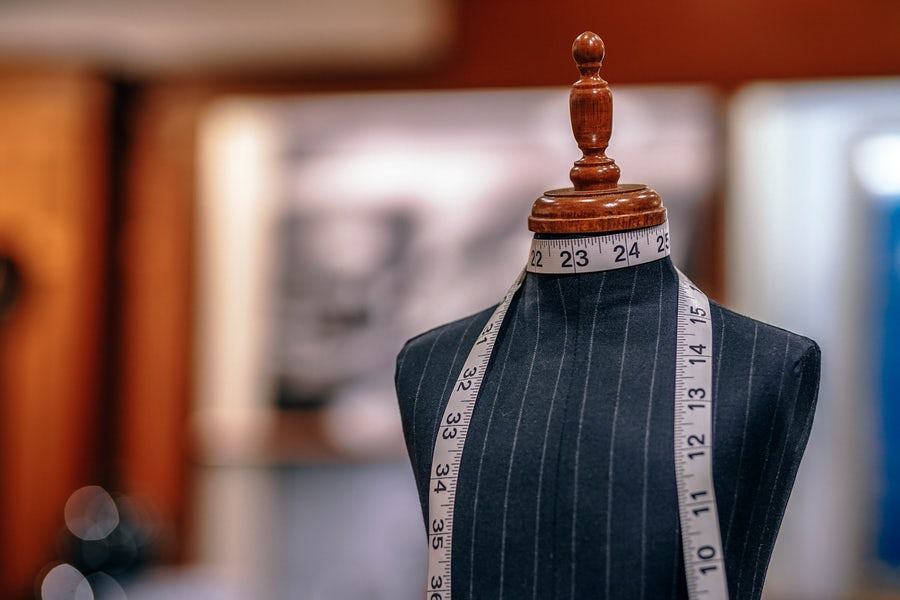Notes from the Wardrobe: What’s Your Number
There is a scene in Love, Loss & What I Wore where the actors confront that bane of all our existences, the dressing room mirror. A nook designed by a sadist to highlight every insecurity you’ve ever had while providing you with eight or nine new ones. This is where bad lighting, fun house mirrors and inconsistent sizing come together to make you question all your life choices. Suddenly you are reduced to numbers - what size you are, how much you weigh, your age, even your income. In that moment bathed in ghastly green fluorescent light you break into a sweat as the voices in your head tell you that have failed utterly at all of the above.
But here’s the cold hard truth. You are not a number. Say it with me now - I. AM. NOT. A. NUMBER. Repeat as needed until you believe it. We humans seem to have a need to quantify things in order understand them. Sometimes this is useful, in baking or medicine or quantum physics. But in determining the worth and value of a human soul? Not so much.
Let’s start with sizing. First of all, there’s no such thing as standard sizing. Your size can vary based on the brand you’re buying and even the season in which you purchase an item. Some designers deliberately cut their clothes larger. This is called vanity sizing and is particularly nice to find when your shopping expedition starts with a large lunch and ends in chocolate cake. Then there is aspirational sizing. Where a brand cuts everything a size or so smaller. This is the one that makes you embark upon the dryer lint and water diet to prove you are worthy of their clothes. The result is that we end up with a range of sizes in our closet and think this means something about our very essence. It doesn’t. If anything, it tells you more about a label’s attitude towards their consumers.
And then there’s weight. Women, food and weight - we are damned if we do, damned if we don’t. Jean Kilbourne, an expert on advertising, wrote an amazing book called Can’t Buy Me Love: How Advertising Changes the Way We Think & Feel (originally published as Deadly Persuasion). In it she devotes a chapter to how food is marketed to women. Almost invariably it is presented as a guilty pleasure, a shameful secret to hide from one’s nearest dearest. We are led to believe that instead of something to be relished and enjoyed, something that we need to live, food is a signifier of our virtue, our willingness to sacrifice to attain a mythical perfection. This mindset leads to shame, which in my view is an absolutely useless emotion. There is nothing shameful about fueling you body, or enjoying wonderfully prepared food with friends and family. Our shame about consuming needed food leads to unhealthy habits and unrealistic expectations about our bodies. I struggle with this everyday. On my good days I know that while it’s important to do things to keep myself healthy so that I can do what I love for a long time, it’s not about a magic number. There is no weight that will magically make me a better person. In fact, constant hunger makes me significantly less amusing to be around.
Age is right up there with weight on our list of obsessions. This another place where, as women, we get a plethora of mixed messages. We’re supposed to “fight” the signs of aging, and stay eternally young, yet the fashion blogs are filled with “age appropriate attire”. We should be striving for a long and useful life but if we haven’t succeeded by thirty we need to retire gracefully from the field. I say, bullshit! You heard me - bullshit! In the first place “age appropriate dressing” is a sexist trope designed to make women feel they need to live up to some standard set by the invisible fashion gods. If it makes you look great and feel great - wear it! Imagine if Tina turner took up wearing Maxi dresses, or Cher decided to rep for Saint John. There would be nothing wrong with that if that’s truly what they wanted to do, but it wouldn’t feel true to the selves that they’ve fought all their lives to become.
And as for success having a predetermined age. One of my favorite character actresses of all time, Thelma Ritter, made her first movie at forty-five and by the time of her death she had accrued six Oscar Nominations. Another of my faves, Kathryn Joosten took up acting in community theatre at age forty-two and went on to create several iconic television characters, among them President Bartlett’s secretary Mrs. Landingham on The West Wing.
What I’ve loved most about working on Love, Loss & What I Wore is that it gives women of all ages and types a voice. It illuminates women who strive every day, not for some ideal that they’ll never reach, but to connect, to become the people they most want to be. It forces us to look past the numbers and see their true beauty which is flawed and funny and just perfect all on it’s own. As are we. Numbers be damned!
